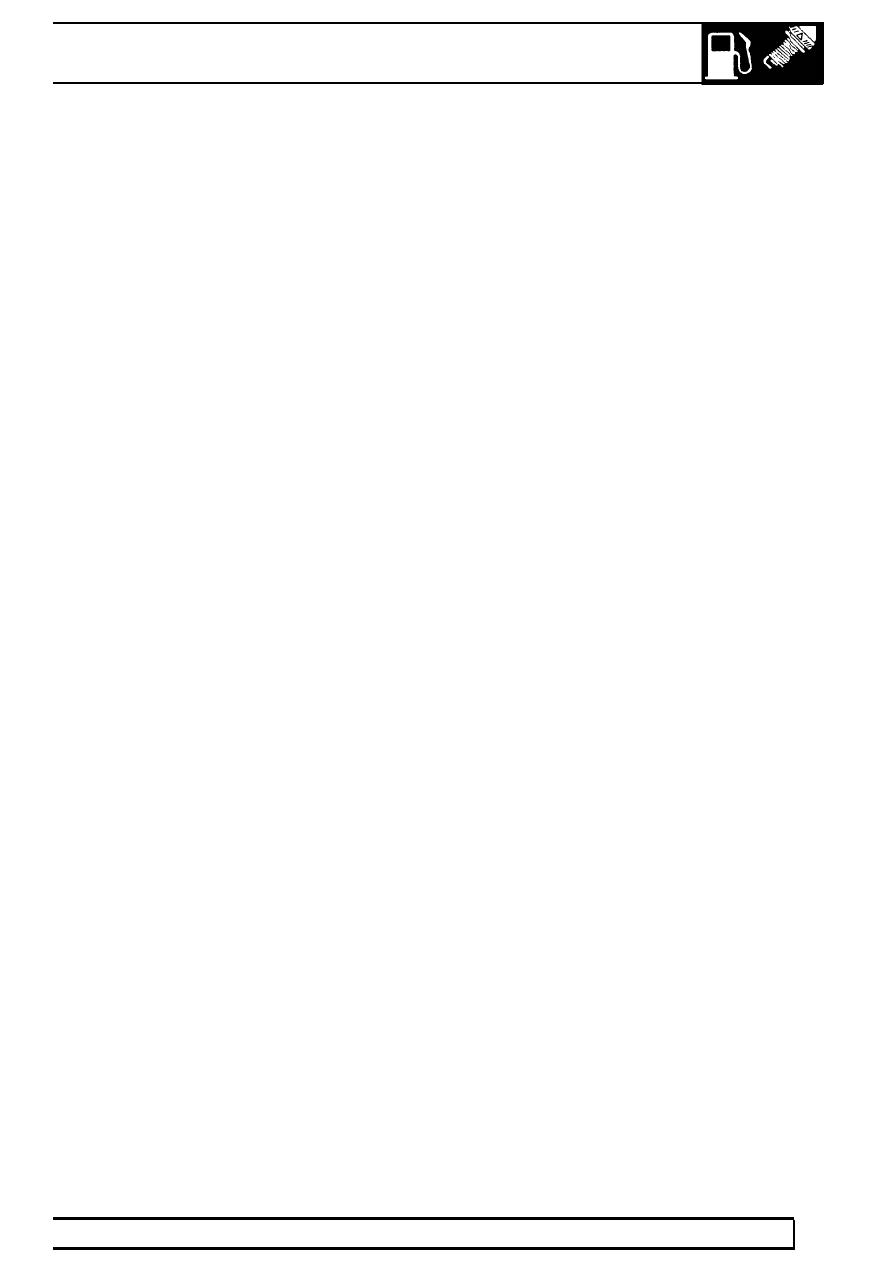Range Rover. Manual - part 98

LAND ROVER V8
59
DESCRIPTION AND OPERATION
The fuel tank pressure sensor is included as part of
the OBD system. A failure of the fuel tank pressure
sensor will not be noticed by the driver, but if the ECM
detects a fault, it will be stored in the diagnostic
memory and the MIL warning lamp will be illuminated
on the instrument pack
Possible fuel tank pressure sensor failures are listed
below:
•
Damaged sensor
•
Harness wiring or connector faulty
•
Open circuit
•
Short circuit to battery voltage or ground
•
ECM fault
Possible symptoms of a fuel tank pressure sensor
failure are listed below:
•
Fuel tank pressure sensor poor performance
•
Fuel tank pressure sensor low range fault
•
Fuel tank pressure sensor high range fault
Fault codes associated with the evaporative emission
control system are listed below:
•
P0171 - Multiplication fuelling adaption (Max.)
exceeded lean limit - LH bank
•
P0172 - Multiplication fuelling adaption (Min.)
exceeded lean limit - LH bank
•
P0174 - Multiplication fuelling adaption (Max.)
exceeded lean limit - RH bank
•
P0175 - Multiplication fuelling adaption (Min.)
exceeded lean limit - RH bank
•
P0171 - Additive fuelling adaption (Max.)
exceeded lean limit - LH bank
•
P0172 - Additive fuelling adaption (Min.)
exceeded lean limit - LH bank
•
P0174 - Additive fuelling adaption (Max.)
exceeded lean limit - RH bank
•
P0175 - Additive fuelling adaption (Min.)
exceeded lean limit - RH bank
•
P0440 - Purge valve not sealing
•
P0442 - Small leak within system
•
P0443 - Purge valve power stage short circuit to
battery voltage
•
P0444 - Purge valve power stage open circuit
•
P0445 - Purge valve power stage short circuit to
ground
•
P0445 - Large leak within system
•
P0446 - CVS valve / filter / pipe blocked
•
P0447 - CVS valve open circuit
•
P0448 - CVS valve short circuit to ground
•
P0449 - CVS valve short circuit to battery
voltage
•
P0451 - Fuel tank pressure signal stuck high
within range
•
P0452 - Fuel tank pressure signal short circuit to
battery voltage (out of range - high)
•
P0453 - Fuel tank pressure sensor signal short
circuit to ground or open circuit (out of range -
low)